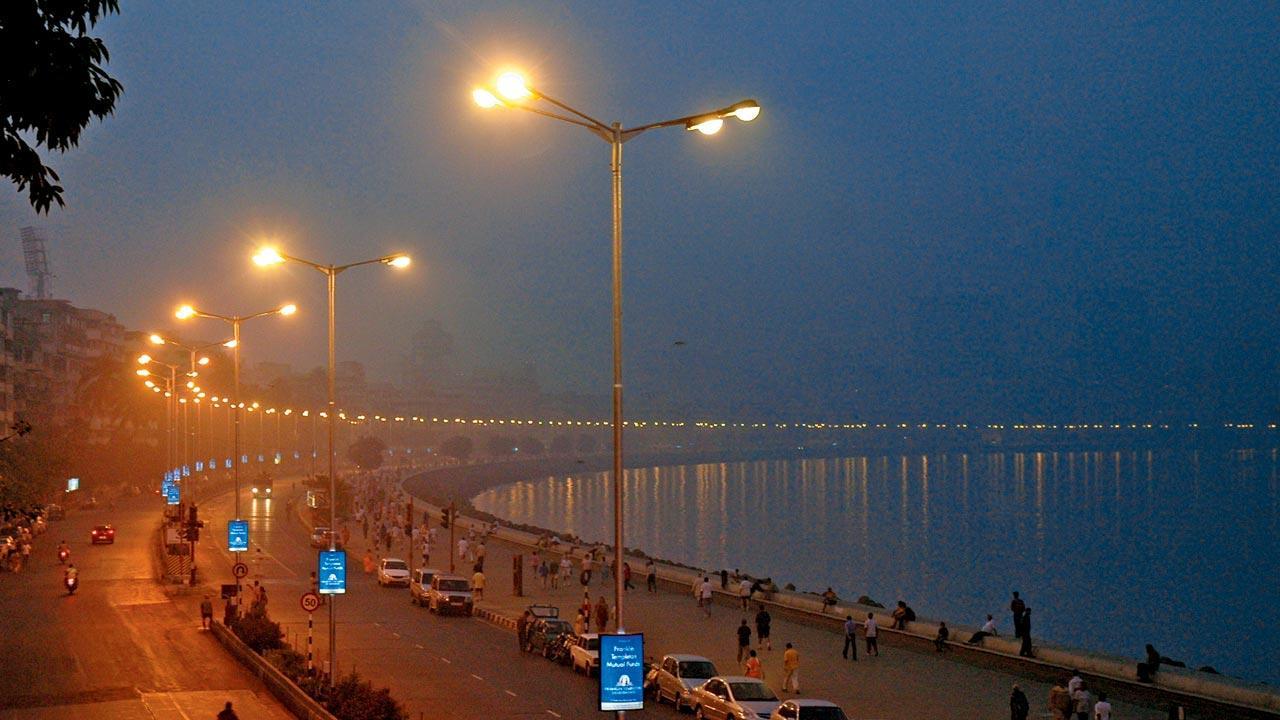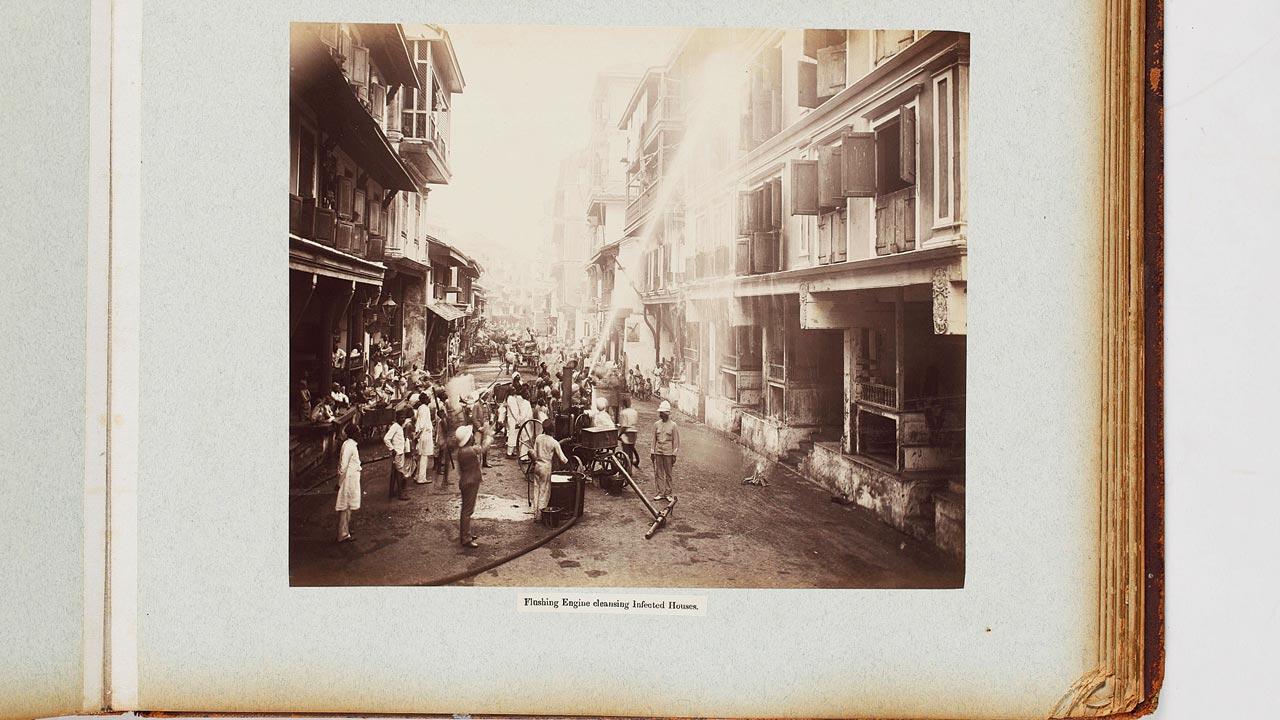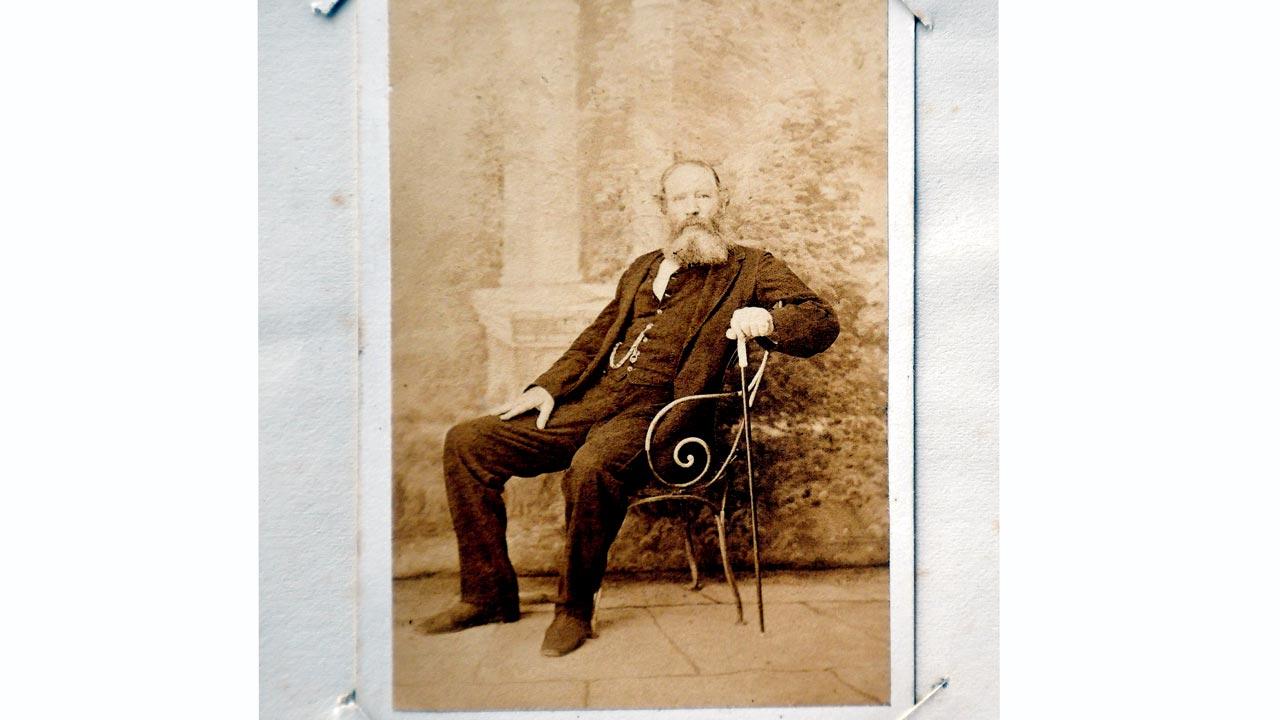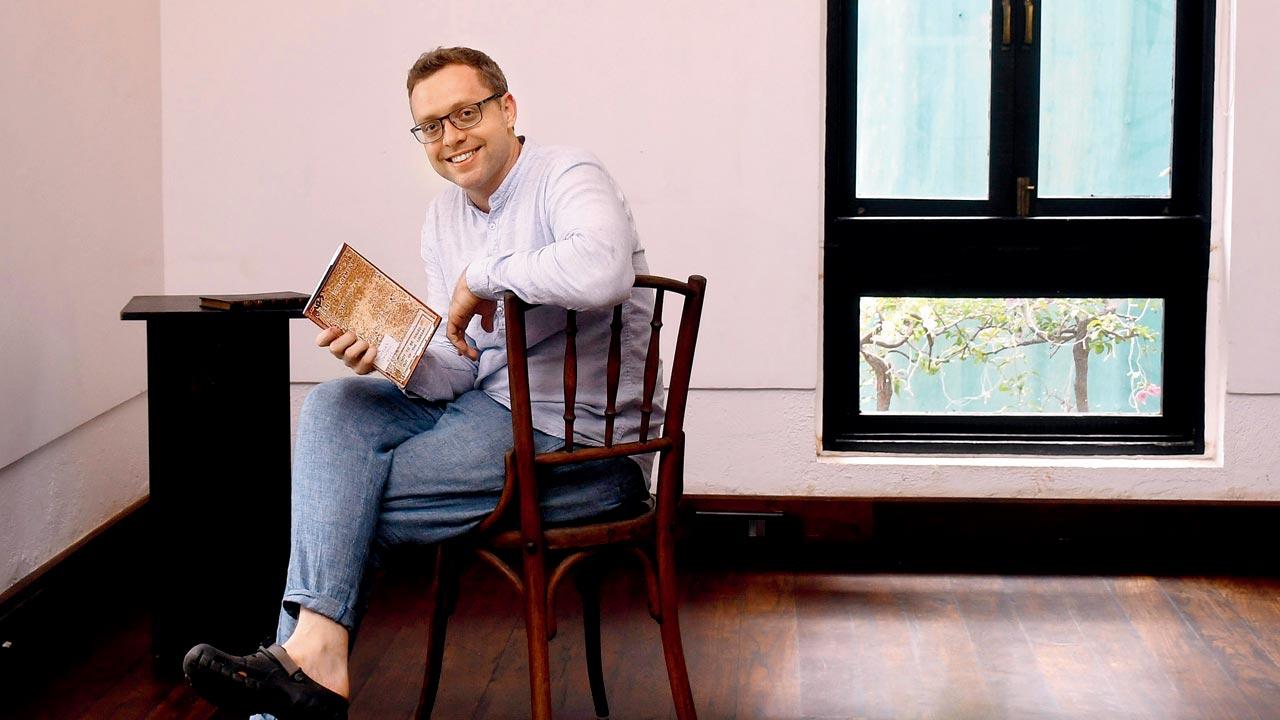The last offering in our series of talks about how Bombay was seen by the city’s first engineers, architects and urban planners

Hydraulic engineer Henry Conybeare envisioned Backbay as a promenade called Marine Parade, much before Marine Drive was conceived. Pic/Bipin Kokate
When British gentlemen met in the 17th and 18th century, the air would be thick with fervent talk of projects—drainage lines, how to optimise the docks, create more efficient transport lines, how to intrude the sea line. Letters were sent to newspapers and civil servants with drawings of an imagined central sewage line, a quarantine island, a necropolis for all faiths. Between 1845 and 1865, engineer William Walker wrote over 100 letters to various newspaper editors in Bombay, with ideas for civic improvement and urban growth. He would self-publish a book containing them just before his departure from the city.
ADVERTISEMENT
Everyone had a plan.
“The interest in transforming Bombay’s physical form in the 1800s must have been how 21st-century techies and investors excitedly speculate on the upcoming gadgets today,” says architect and civic historian Robert Stephens. “Every foreign citizen was up-to-date with the latest sanitation, docks, infrastructure and reclamation schemes. At dinner parties, conversations circled around these, for as Executive Engineer Colonel Walter Ducat opined in 1867, ‘So much has been written lately about wet docks in Bombay, that most people must be quite tired of the subject’.”
 Flushing engine cleaning infected houses, from the album Plague Visitation, Bombay, 1896-1897, by FB Stewart and Captain Moss. Pic/Sarmaya Arts Foundation
Flushing engine cleaning infected houses, from the album Plague Visitation, Bombay, 1896-1897, by FB Stewart and Captain Moss. Pic/Sarmaya Arts Foundation
Leased by the East India Company from the British Crown, the archipelago was run more as a corporate enterprise. And corporate value systems and processes that ensure efficiency, economy and growth. The capital of British India was in far off Calcutta, moving towards Delhi by the turn of the 20th century. Architect Sir Edwin Lutyens was rolling up his sleeves by the drawing board; The seven islands of Bombay—with growing trade due to the docks—were already showing their potential to become a financial centre.
The plan was to make Bombay Urbs Prima in Indis (first city of India), and everyone wanted to help.
“A vast majority of the public works projects built in the 19th century were designed by foreign architects and engineers, some of whom never set foot in India,” says Stephens, whose book Bombay Imagined is a collection of 200 unrealised urban visions of the city. For example, William Burgess prepared award-winning designs for the JJ School of Art, without setting foot in Bombay; his student William Emerson carried dozens of drawings to India. The plan fell through when a squabble arose over the fees—with Burgess expecting 5 per cent (of the project cost), but being offered a mere 2.5 per cent. Emerson emerged victorious—he would eventually design Crawford Market across the street from the JJ School of Art.
 Engineer William Walker wrote several letters to various editors of newspapers, with ideas for urban projects. Later, he gathered them in a self-published book. Pic/Personal collection Robert Stephens
Engineer William Walker wrote several letters to various editors of newspapers, with ideas for urban projects. Later, he gathered them in a self-published book. Pic/Personal collection Robert Stephens
The second governor of Bombay, Gerald Aungier, had negotiated acquisition of the islands of Colaba and Old Woman from the Portuguese in 1675, bringing all seven islands under the Company’s jurisdiction. As the docks grew busier, there rose a need for more housing.
The eyes turned towards the sea. Receding tides left shallow swamps between the islands, which became nurseries for mosquito larvae. Bouts of malaria brought an Englishman’s average lifespan in the city down to three years. The answer was reclamation that closed these breeding grounds and created more space by joining the islands.
Arthur Crawford, Bombay’s first municipal commissioner, was passionate about evolving all aspects of the city—there was hardly an urban topic or issue that he had not thought and written about. “He envisioned the city beautiful, with public parks greater than those in London,” says Stephens.
 Civic historian and architect Robert Stephens book, Bombay Imagined, encapsulates 200 projects envisioned for Bombay between 1670 to 2020 that remained on paper. Pic/Ashish Raje
Civic historian and architect Robert Stephens book, Bombay Imagined, encapsulates 200 projects envisioned for Bombay between 1670 to 2020 that remained on paper. Pic/Ashish Raje
“Many of the men who proposed various schemes were not trained in the sense that we understand the engineering and planning today,” says Stephens. “Many were self-taught, while others were architects, civil engineers, hydrologists. Some, like William Walker, were soldiers of fortune. After leaving his home in England before the age of 20, he boarded a ship that briefly halted in Bombay in 1820, and was back in 1845.”
Walker was a self-taught engineer and worked for the Railways, supervising the stores of train equipment. He was possibly Bombay’s first environmentally-minded foreign citizen-activist, passionate about using natural resources as efficiently as possible. These included one radical scheme to use gas generated during cremation to illuminate Bombay’s street lights.
Henry Conybeare, a Welsh hydraulic engineer, envisioned sinking filtering wells into dozens of tanks across the city—making access to clean water within walking distance of every resident. The scheme was rejected. A few years later, while gazing upon the skeleton and sewage-strewn sands of Backbay, Conybeare had a vision: This gentle sweep of sand and sea would make for a great “Marine Parade”. It would be decades before Marine Drive came along the edge of Backbay, by which time Conybeare was long forgotten.
Architect Sir George Gilbert Scott, who designed the Rajabai Clock Tower for Mumbai University, prepared the earliest designs for the Afghan Church, which Sir Bartle Frere described as “a very beautiful design, but one too elaborate... for the money available.”
The government of Bombay suggested a sanatorium on Butcher Island (now Jawahar Deep) to isolate those suffering from infectious diseases. “The project suggested upgrading the existing buildings, and raising a hospital. The cost was projected at Rs 1,00,000, but the authorities in Calcutta turned it down,” says Stephens. “Twenty years later, the bubonic plague came to Bombay [on ships from Hong Kong] and created the need for quarantine areas.” Two decades of the plague changed the city.
Open sewage lines were among the largest contributors to the spread of the plague. After it receded, narrow serpentine streets weaving through chawls that housed workers, were dug up, and sewage pipes were laid under them. Urban planners began drawing out self-contained suburbs, such as Bandra, rather than one city centre in Fort. These suburbs were connected by public transport, and had underground drainage pipes.
Another missed opportunity was for subterranean railway lines, much before the city would be brought to a halt in the 21 century by the laying of an underground metro. “Hector Tulloch envisioned a subway line in Bombay decades before New York City would open her subway,” says Stephens. There were many plans around the railways—including a line to a necropolis for all faiths in the centre of the city. “It would have been the ultimate deadline,” he jokes.
 Subscribe today by clicking the link and stay updated with the latest news!" Click here!
Subscribe today by clicking the link and stay updated with the latest news!" Click here!







